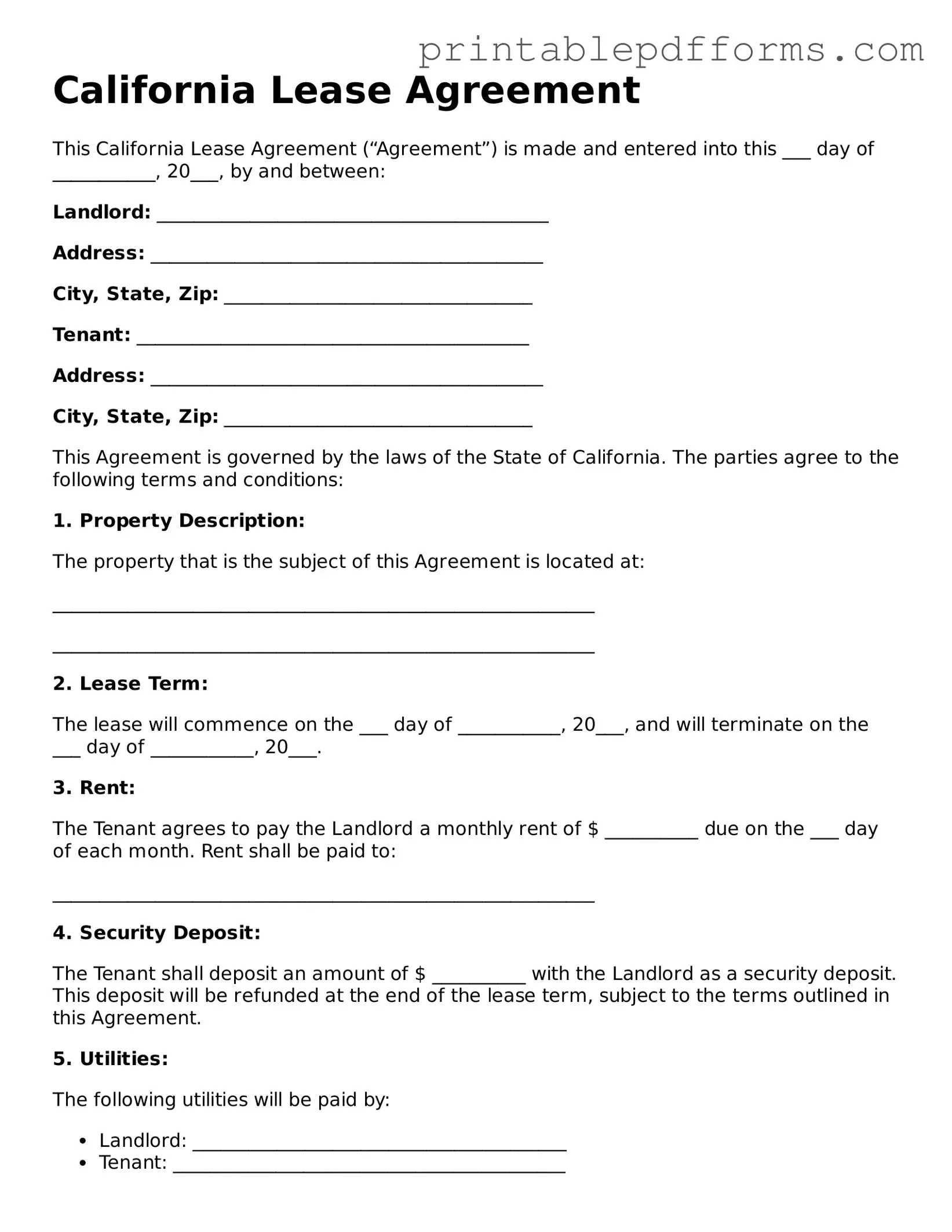California Lease Agreement
This California Lease Agreement (“Agreement”) is made and entered into this ___ day of ___________, 20___, by and between:
Landlord: __________________________________________
Address: __________________________________________
City, State, Zip: _________________________________
Tenant: __________________________________________
Address: __________________________________________
City, State, Zip: _________________________________
This Agreement is governed by the laws of the State of California. The parties agree to the following terms and conditions:
1. Property Description:
The property that is the subject of this Agreement is located at:
__________________________________________________________
__________________________________________________________
2. Lease Term:
The lease will commence on the ___ day of ___________, 20___, and will terminate on the ___ day of ___________, 20___.
3. Rent:
The Tenant agrees to pay the Landlord a monthly rent of $ __________ due on the ___ day of each month. Rent shall be paid to:
__________________________________________________________
4. Security Deposit:
The Tenant shall deposit an amount of $ __________ with the Landlord as a security deposit. This deposit will be refunded at the end of the lease term, subject to the terms outlined in this Agreement.
5. Utilities:
The following utilities will be paid by:
- Landlord: ________________________________________
- Tenant: __________________________________________
6. Alterations:
The Tenant shall not make any alterations or improvements to the property without the Landlord's written consent.
7. Maintenance and Repairs:
The Tenant agrees to keep the property in good condition. The Landlord is responsible for major repairs not caused by the Tenant.
8. Termination:
- The Tenant must provide ___ days written notice before vacating the property.
- The Landlord must provide ___ days written notice for terminating this Agreement.
9. Governing Law:
This Agreement shall be governed by the laws of the State of California.
Signatures:
The parties have executed this Agreement as of the day and year first above written.
_______________________________ Landlord Signature
_______________________________ Date
_______________________________ Tenant Signature
_______________________________ Date
